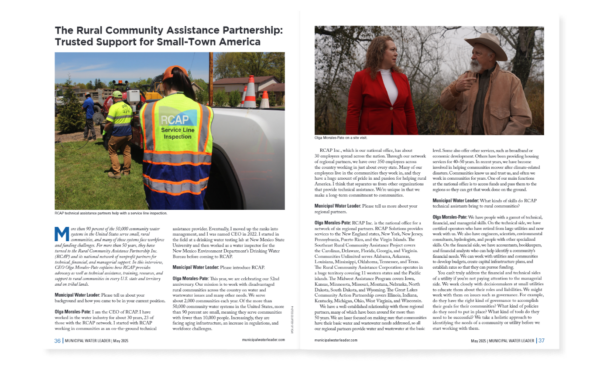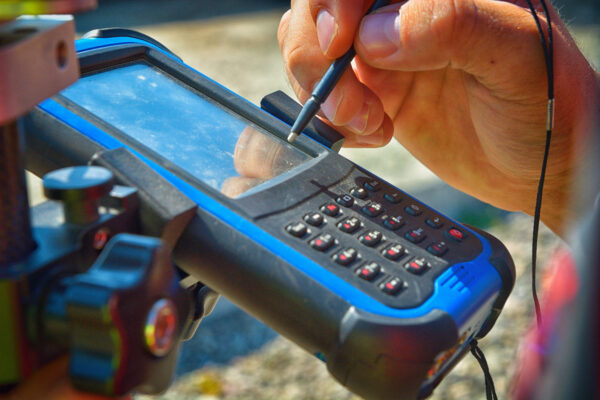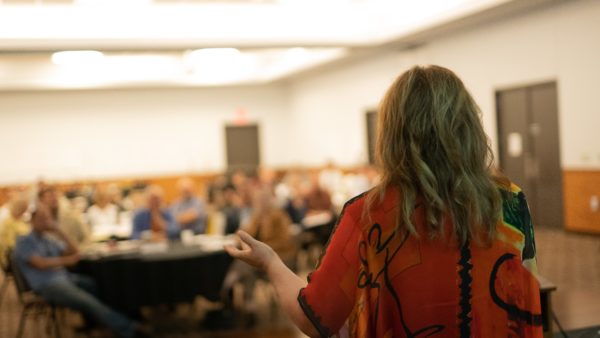
RCAP CEO Olga Morales-Pate Interviews with Municipal Water Leader
Municipal Water Leader Magazine recently published an article highlighting RCAP CEO Olga Morales-Pate. The interview’s focus spans across the work RCAP does. As a network of six regional partners that operate across the nation, the needs and challenges of each rural community can vary greatly. What ties this work together, however, are the dedicated staff, partners, and community members who are committed to tackling the obstacles in front of them. “… rural areas have a lot of basic infrastructure needs,” Morales-Pate states. “We need to invest in an intentional way to make those communities resilient, which will benefit the entire country. That is the vision we work for each day, and we do everything we can to make it a reality.”
Click here to read the full article.

Getting the Most Bang for Your Buck – GIS Mapping
It’s no secret that Geographic Information Systems (GIS) have been around for some time, but have taken off in recent years among the small systems world. This is a brief story on how one small town in Iowa has fully embraced GIS for their work, and how they are getting the best return on investment possible.
Malvern is a small farming town of 1,142 in southwest Iowa. MAP began assisting the community in late 2017 with funding application assistance for a United States Department of Agriculture Rural Development (USDA-RD) loan for drinking water treatment improvements. After almost four years of assistance through the construction process and loan servicing items, the community was looking to take the next step in moving forward sustainably for the rest of the system. When the possibility of incorporating GIS came up, the community jumped at the chance to have their systems mapped and start an asset management plan.
MAP began the GIS phase of the project in late 2022, by researching where all of the components of the system were supposed to be located. This can be a very challenging part of the process, as assets are moved or replaced over time, and printed maps become faded as they sit in old storage areas. Even if your community is not entirely ready for GIS, you should still have an updated paper map secured somewhere that UV light, rain, and pests will not damage it. Once spring weather arrived in southern Iowa, MAP began the field collection portion of the project. It took about 2.5 weeks to fully collect all the associated points, which included pictures of every asset, along with any information that MAP could gather from fire hydrants. Once all points were collected, the GIS coordinators at MAP loaded those points into the ESRI GIS software system and started building the digital map in the program.
Once the digital map was completed in late summer of 2022, the real potential of the GIS system was shown to the community. MAP provided training assistance for the GIS software to show city staff how certain items look, how to change them, and how to add or update information about the asset. At the same time as the map was being finished, the city purchased its own GIS equipment so that it could add additional points not related to the utility systems. They also want to add new points for assets, as a new subdivision is being finished on the west side of town. The next step the city is looking into with MAP’s assistance is importing data from additional GIS mapping done by the county and state Department of Natural Resources (DNR). Years prior, the DNR had spent time GIS mapping all of the city-owned large hardwood trees, and their condition. The county also has a GIS mapping file for all property lines in town. The city would like to migrate all these layers together so that they can see which assets lie near property lines and possible water or sewage lines near very large hardwood trees.
Through the determination of the community and its elected officials, the City of Malvern has embraced the potential of what GIS can do for every aspect of the community. MAP will continue working with the city and its staff to demonstrate what products they can build with their maps.
This project/article was funded under RCAP’s USDA Technitrain 23 – 24 grant.

Effective Communication with the Community
Despite the lack of knowledge among many individuals regarding the workings of their local water utility, the expectations of customers concerning drinking water tend to be high. These expectations, however, do not account for the challenges faced by utilities, particularly smaller ones, in delivering their product. When issues arise or changes must be made, customers often do not understand why their expectations are not met. As such, utilities need to ensure that their customers are aware of the challenges they face so that their expectations align with reality. Consistent communication with customers is crucial in building community understanding of the system.
Water utilities rely on their customers to comprehend how the system operates and the difficulties it encounters to secure community support for present operations and future enhancements. A utility should educate consumers on the source of their water and the procedures required to provide safe and clean drinking water. Utilities should also communicate any ongoing issues, such as a lack of staff, insufficient funding, difficulties in complying with increasing regulations, and challenges encountered when dealing with source water. Community support is critical when situations arise that are usually met with agitation or resistance, such as issuing a boil order, blocking traffic for repairs, or raising rates.
There are methods by which a system is required to communicate with its community, such as the Consumer Confidence Report (CCR) Rule mandated by the EPA, which necessitates that all public drinking water systems send water quality reports to their customers. In some states, utilities must also keep track of customer complaints. Although these are two effective ways to exchange information, systems should be proactive and take further steps to connect with their customers. A multi-faceted approach is ideal for educating customers who are likely to have little knowledge of water system management difficulties. Below are some methods utilities can use to increase communications with their customers:
The utility should actively seek feedback from the community about their experiences and expectations. If a utility is not actively soliciting feedback from the community, it is likely only receiving feedback in the form of complaints. Complaints provide valuable information about what users expect from a system, but usually not under the best of terms. Feedback can be solicited through other means, such as making phone calls, sending out surveys with bills, or participating in local events. Actively seeking feedback aims to increase utility and customer interaction, providing the utility with an effective line of communication to share information.
The utility’s staff and information should be accessible to users. Ensuring that staff and information are available to customers demonstrates that they can quickly receive answers to their questions. One way to achieve this is through in-person events. Some utilities have begun setting up booths at farmers’ markets and festivals, enabling employees to interact with customers and become seen as active members of the community. Utilities can offer classes for customers or incorporate education into an annual meeting. Lastly, utilities should encourage customers to call the office with questions and make this information available on a website or email.
Inviting the community to meetings is also recommended. An annual meeting is an excellent opportunity to educate customers about the system, but inviting users to monthly meetings can increase the likelihood of gathering feedback, educating, and answering questions. Information about meetings should be posted in multiple locations frequented by customers, including the post office, libraries, and churches. The event should be posted online on the utility’s website or social media and promoted frequently through social media campaigns.
There are various ways to improve communication with customers, and utilities should choose the methods that best suit the community they serve. Engaging with customers can lead to a more supportive customer base. An informed community of customers is more likely to comprehend the challenges faced by the system and support the needs of the utility.